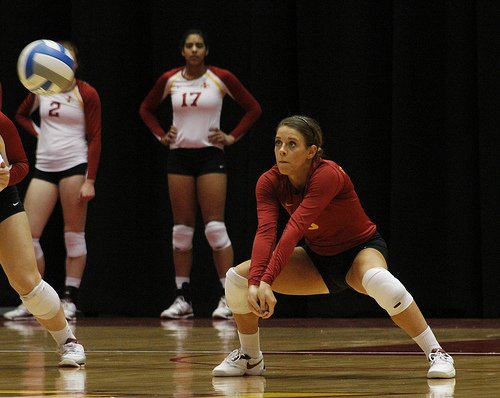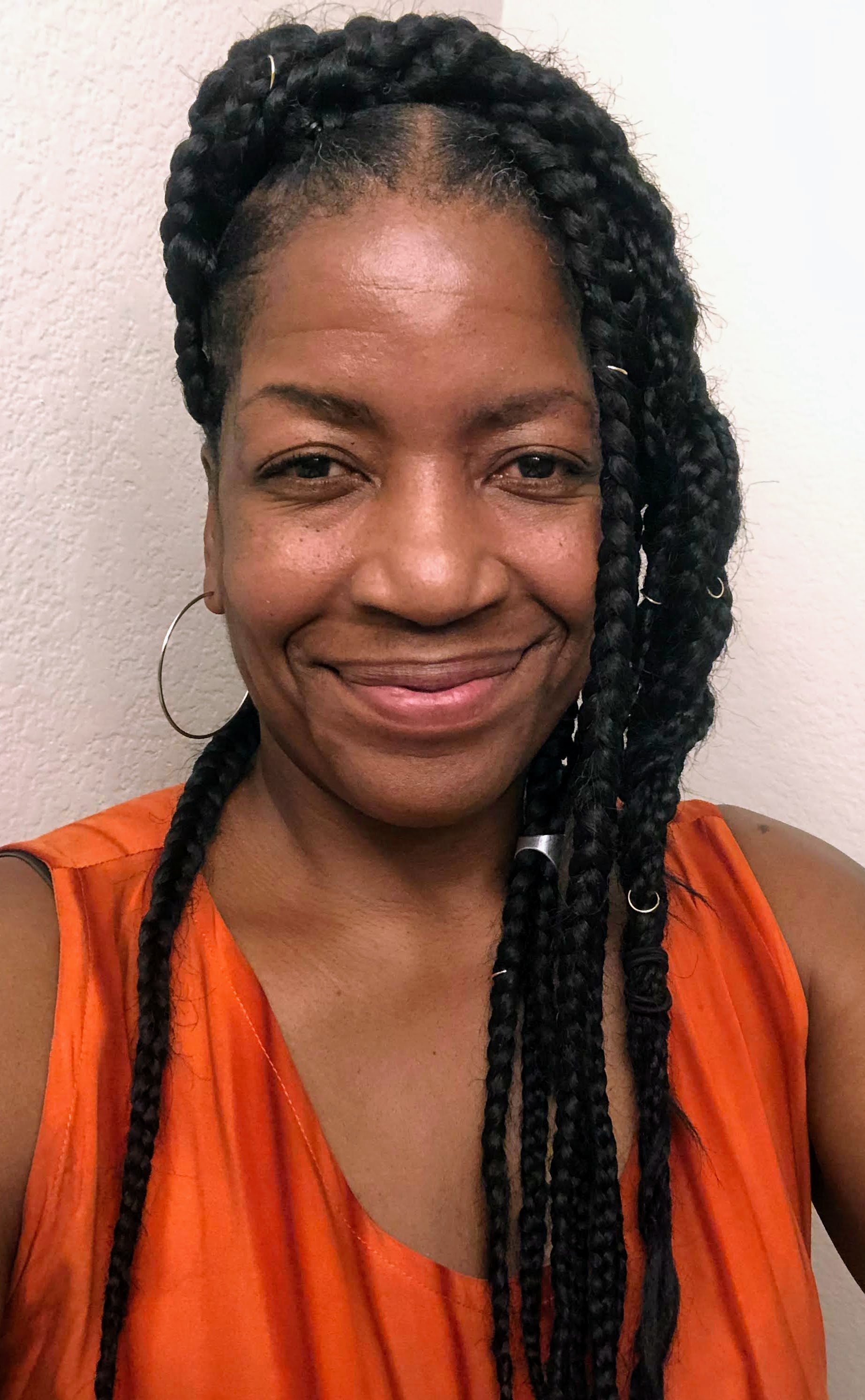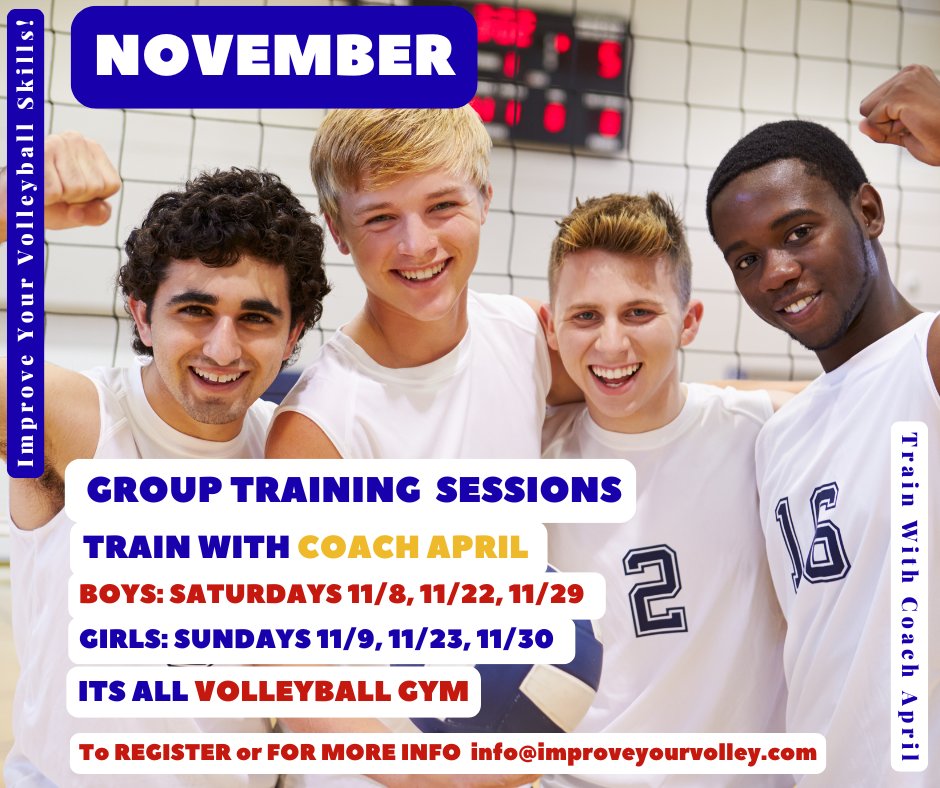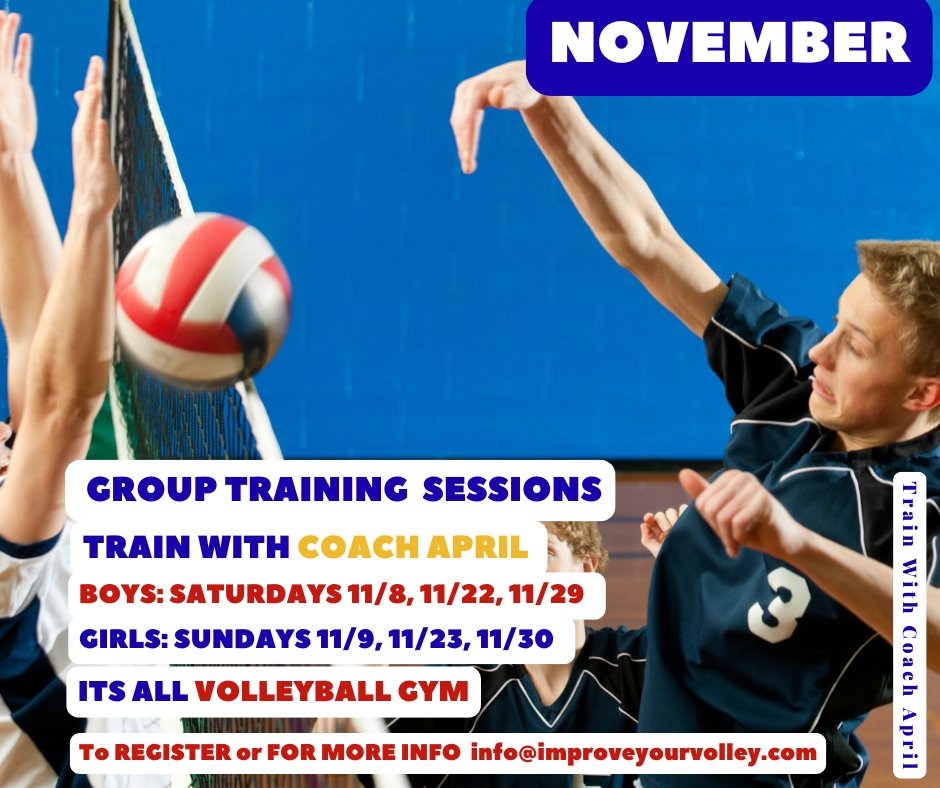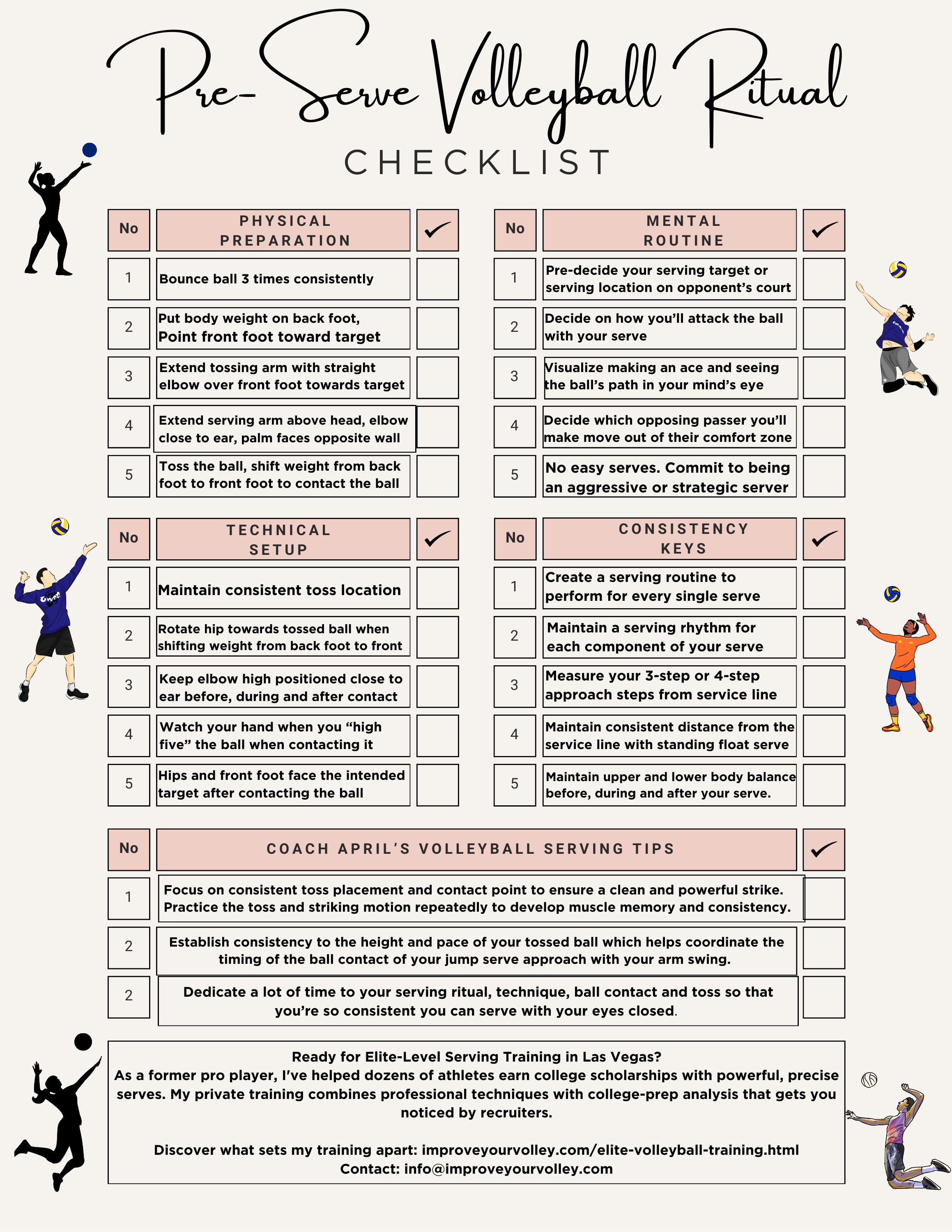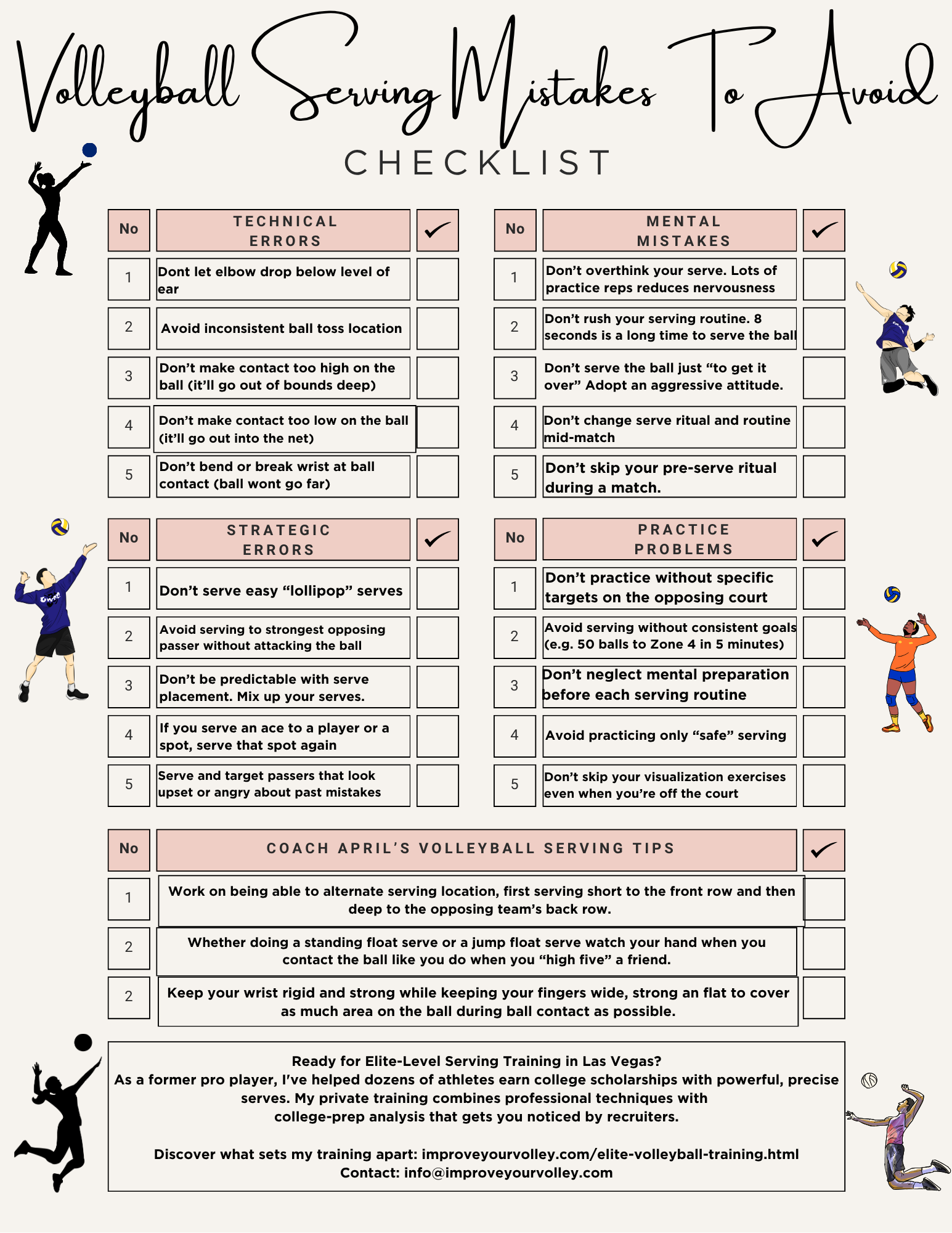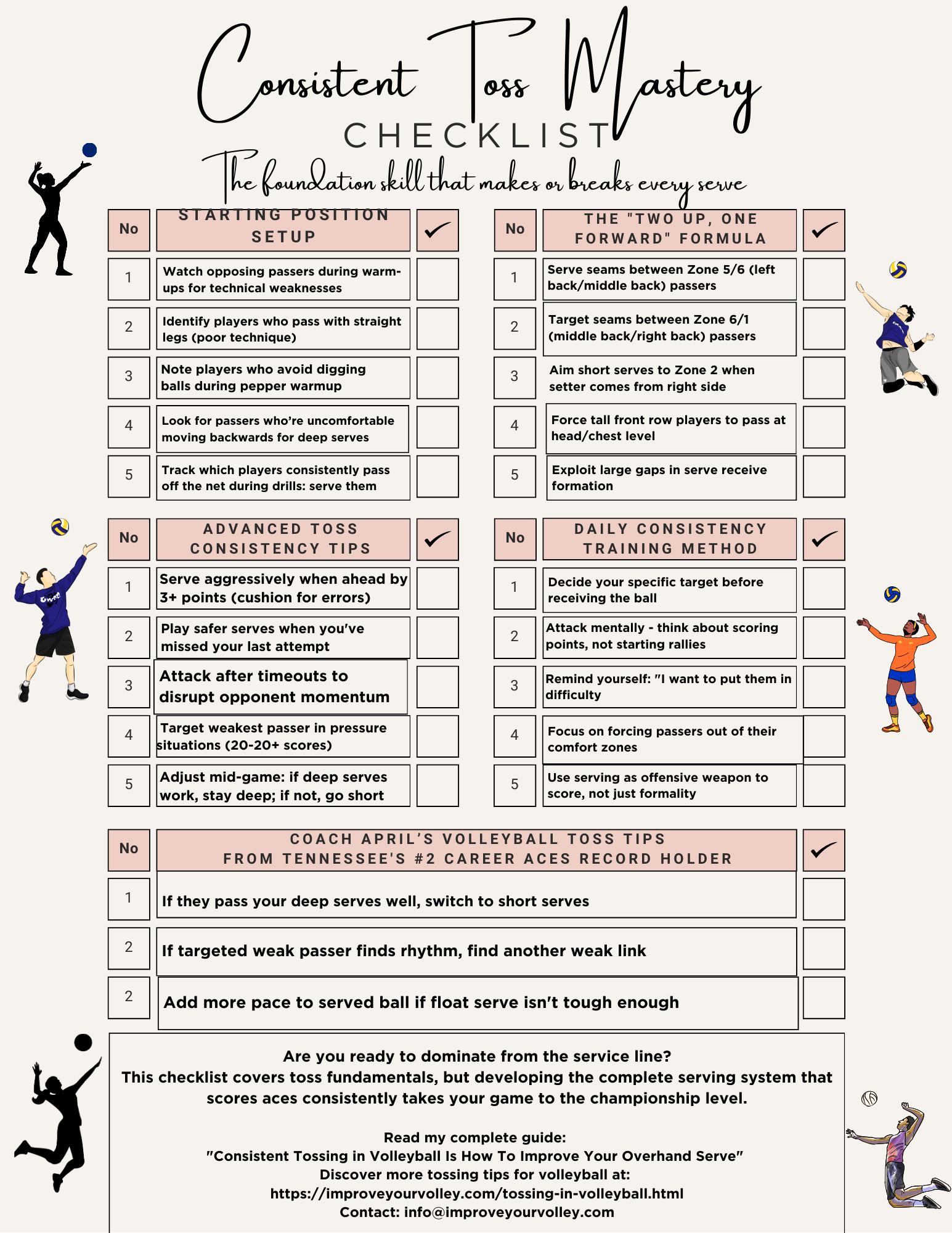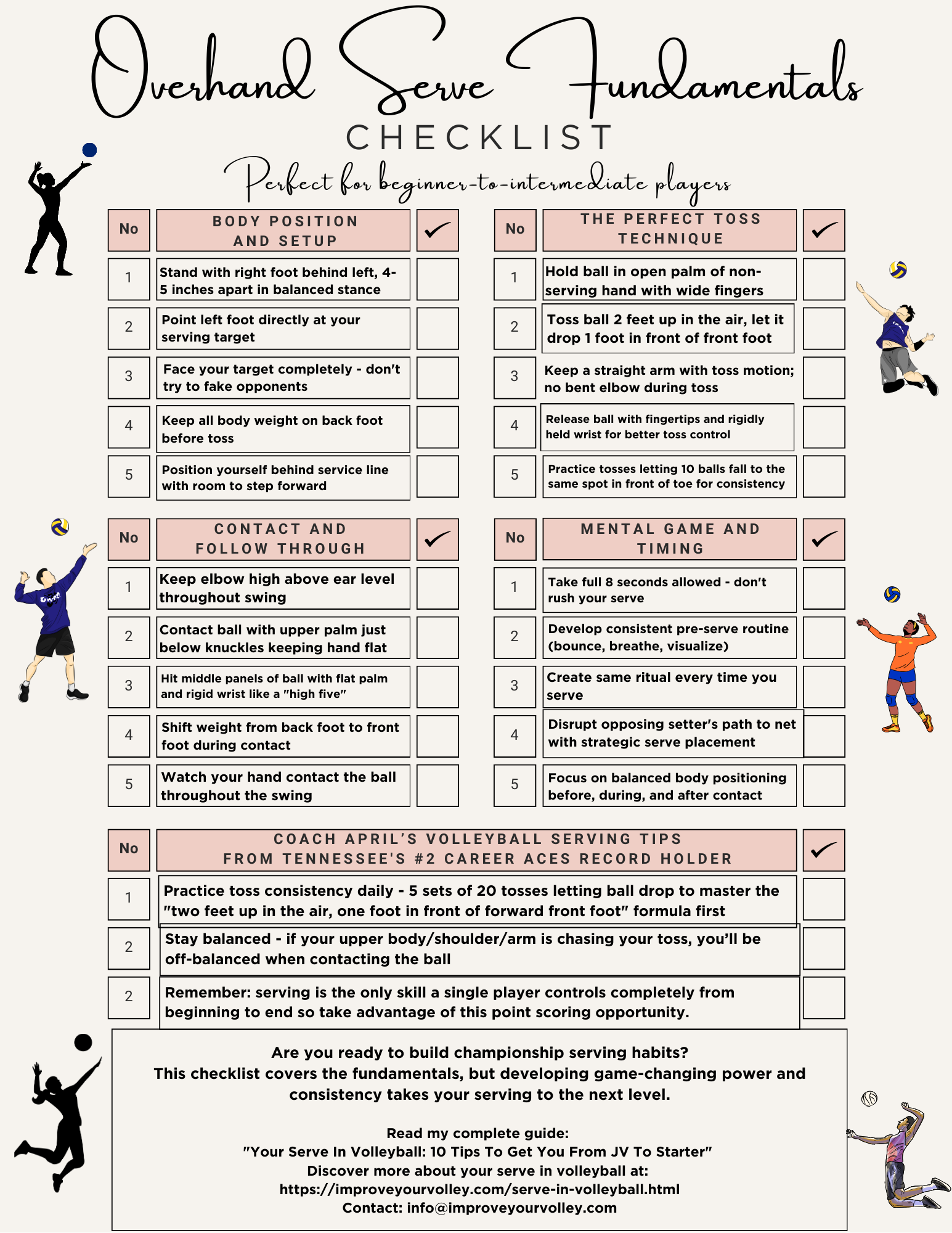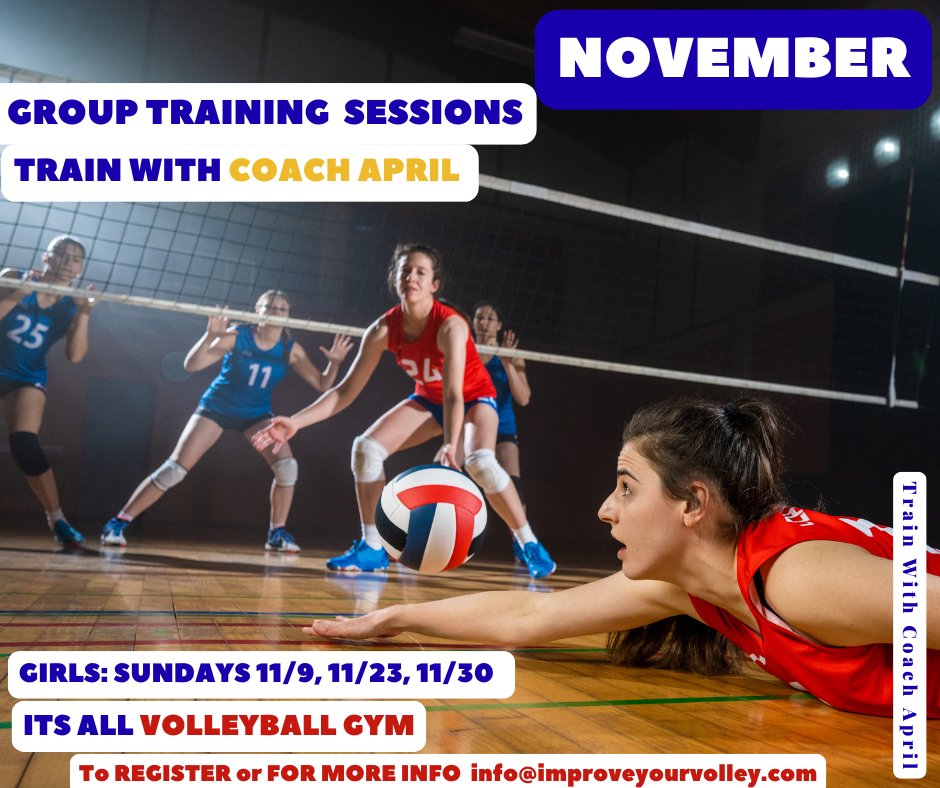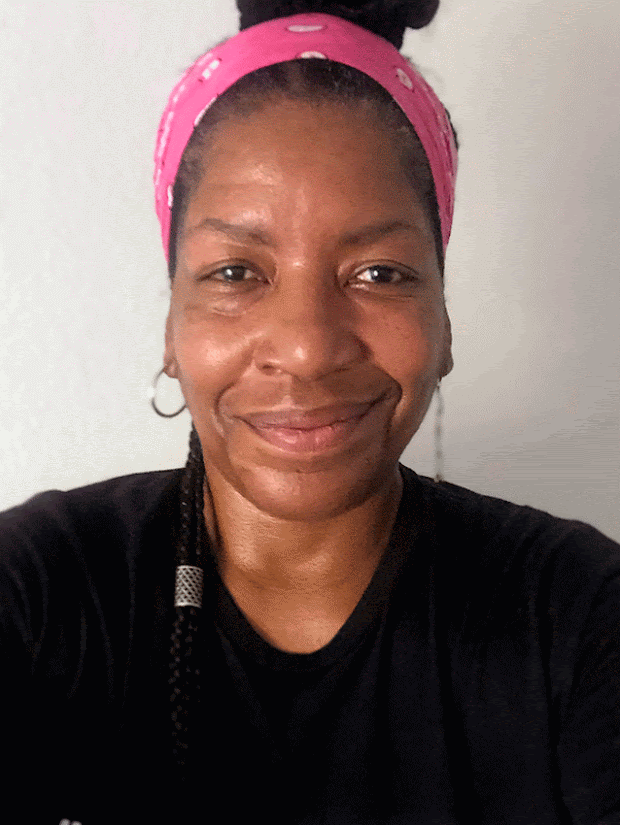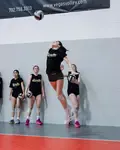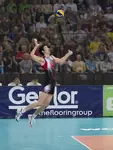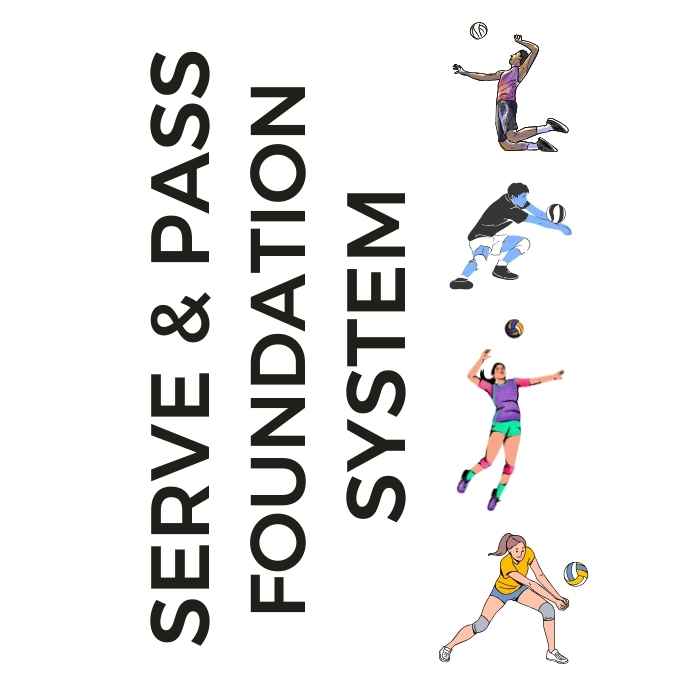
Serve + Pass Foundation System: The Complete Skills Arsenal The two-skill mastery system that transforms inconsistent players into the athletes coaches build their lineups around. Stop Struggling With The Two Most Important Skills In Volleyball!
- Improve Your Volleyball with Coach April
- The Best Volleyball Drills
- 4 Digging Drills For Volleyball Players Who Need To Improve Dig Skills
4 Digging Drills For Volleyball Players Who Need To Improve Dig Skills
Want to know what some good digging drills for volleyball are? Here are a four fun drills that I do with liberos and hitters who privately train with me.
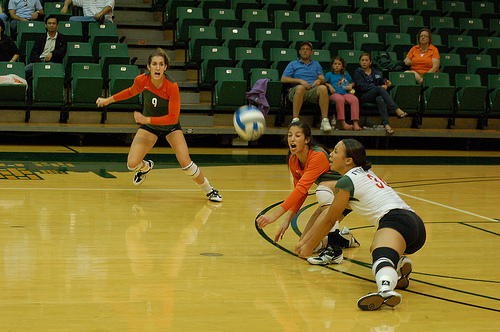 4 Digging Drills For Volleyball Players Who Need To Improve Dig Skills: In my Coach April libero training sessions we do a ton of digging drills for volleyball diggers, liberos, backrow specialists to help improve their defensive skills in the back row.
4 Digging Drills For Volleyball Players Who Need To Improve Dig Skills: In my Coach April libero training sessions we do a ton of digging drills for volleyball diggers, liberos, backrow specialists to help improve their defensive skills in the back row.That's the philosophy I stand by ...and one that's helped me produce and work with a number of current D-1 athletes, twice as many D-2 players and a slew of D-3 and NAIA players currently competing in NCAA competition.
Now that I've said what I said I'll step down from my soapbox and show you some more of the digging drills for volleyball I love to do....so let's get to it.....
4 Digging Drills For Volleyball Players To Do Like This Hit And Dig Drill With Cross Court Digging
Remember there are two ways to do this drill.
In this version we set the ball baskets as targets where the setter's would be. There are actually two digger groups working one in the left back Zone 5 position and one with a right back Zone 1 defensive position.
Hitters alternate at a steady rhythm so the drill moves quickly and diggers have a brief pause to recuperate after each dig.
4 Digging Drills For Volleyball Players Like A Fun Game of Hitter vs. Digger - Winner scores 10 points First
A fun game of Hitter vs. Digger: Winner scores 10 points
First the Hitter hits hard deep cross court and scores a point when digger can’t touch it or digs an unplayable ball.
Digger scores a point when they dig a playable ball.
For beginners, hitter errors may not count but for more advanced players hits in the net or out of bounds are points scored for the digger.
4 Digging Drills For Volleyball Players Like The Hit And Overhead Digging Drill
I teach this drill a lot to beach partners when I'm coaching sand volleyball.
Usually your partner hits at you so the ball is aimed for your chest and up and you start your digging hand ready position higher than what you do with regular pepper.
The goal is to push the ball..some even say "set the hard hit ball" up in the air....so your partner steps in to set it for you.
Want To Track Your Progress To Measure Your Improvement Over Time? Here's How
Improving your digging skills in volleyball is a gradual process, but seeing your progress over time can be super rewarding and motivating.
I keep track of everything especially when I work out because I want to know how much I've improved in a short amount of time and oer the long run and Im pretty sure you would want to also.
Here's a simple progress tracking system you can put in place to measure your growth:
1. Drill Performance Log
Maintain a log where you track your performance for each drill over time.
For instance, in the ‘Hit and Dig Drill’, document the number of successful digs out of total attempts in each practice session.
Over time, an improvement would be seeing an increase in your rate of successful digs.
2. Consistency Count:
Keep a tally of how many times you can perform each drill correctly without interruption. As you advance, you should be able to complete more repetitions without errors.
3. Reaction Time Recording:
Use a stopwatch to time how quickly you're able to react to the ball and complete a successful dig. You should aim to see this time decrease as you improve.
4. Dig Quality Rating
Rank the quality of your dig after each drill on a scale of 1-10, taking into consideration the control and accuracy of the dig. Over time, your average score should increase.
5. Game Performance Review:
Use your improvements in practice to set achievable goals for real game situations.
Track these goals and review your game performances to see where your practice improvements are translating into the game.
Remember, progress may feel slow at times, but consistent practice paired with mindful tracking of your improvements can lead to tangible progress.
Celebrate your small wins and keep pushing towards becoming the best volleyball player you can be!
For easy tracking, consider using a digital tool or app that allows you to log this data conveniently during or after your practice sessions.
Alternatively, a simple notebook dedicated to your volleyball progress tracking can be just as effective.
Watch as Cassady runs down this ball in our Breakfast Club team practice.
This is an amazing defensive play which I attribute to her continuous reps done during our cross court partner digging drill.
Defense Volleyball Training: Pepper Drills: Increase Ball Control Drill Intensity To Improve Digging
Do You Follow Me on Pinterest?
 Private or semiprivate volleyball indoor/sand lessons are an excellent way for young Las Vegas high school volleyball players to quickly improve their individual skills through a private or semi-private coaching experience.
These lessons are conducted by former pro volleyball player, former USA Volleyball High Performance instructor and Evaluator and Tstreet Vegas 18s head Coach April Chapple on a weekly basis.
Sign up now!
Private or semiprivate volleyball indoor/sand lessons are an excellent way for young Las Vegas high school volleyball players to quickly improve their individual skills through a private or semi-private coaching experience.
These lessons are conducted by former pro volleyball player, former USA Volleyball High Performance instructor and Evaluator and Tstreet Vegas 18s head Coach April Chapple on a weekly basis.
Sign up now!Follow me on Pinterest Volleybragswag to improve your game even faster!
I share alot of individual, partner and easy-to-do volleyball serving drills we do in class with my followers.
Many of these volleyball practice drills you can do at home by yourself or try at your next practice with your teammates.
If you're a B team or JV player trying to make varsity next year...your goal should be to complete 1000 reps a day of at least three of the basic skills on your own...volleyball passing, serving and setting should be at the top of the list.
If your athlete struggles with consistent serve receive, gets subbed out, or is overlooked for playing time—this is the fix you’ve been looking for.

Struggling with passing consistency?
I help talented passers tired of getting pulled from games because of inconsistent serve receive skills BUILD passing confidence without expensive private lessons using the same 3-step system that's helped dozens of my athletes get recruited.
Download my eBook for $17.99 and start building the passing confidence that keeps you on the court—and gets you seen by college coaches.
From Lady Vol to Legend: Coach April Produces Powerful Passionate Players...is that you?
What Are You Looking For?
Click to Download Your Pre Serving Ritual Mastery Checklist pdf:
🎯Volleyball Pre Serving Ritual Guide -
Players! Learn How To Transform Your Serve from Weak to Weapon
Click to Download Your Parent's Volleyball Serving Checklist pdf
🎯Parent's Volleyball Serving Checklist Guide
Parents! Help Your Player Develop Championship Serves (Even If You've Never Played)
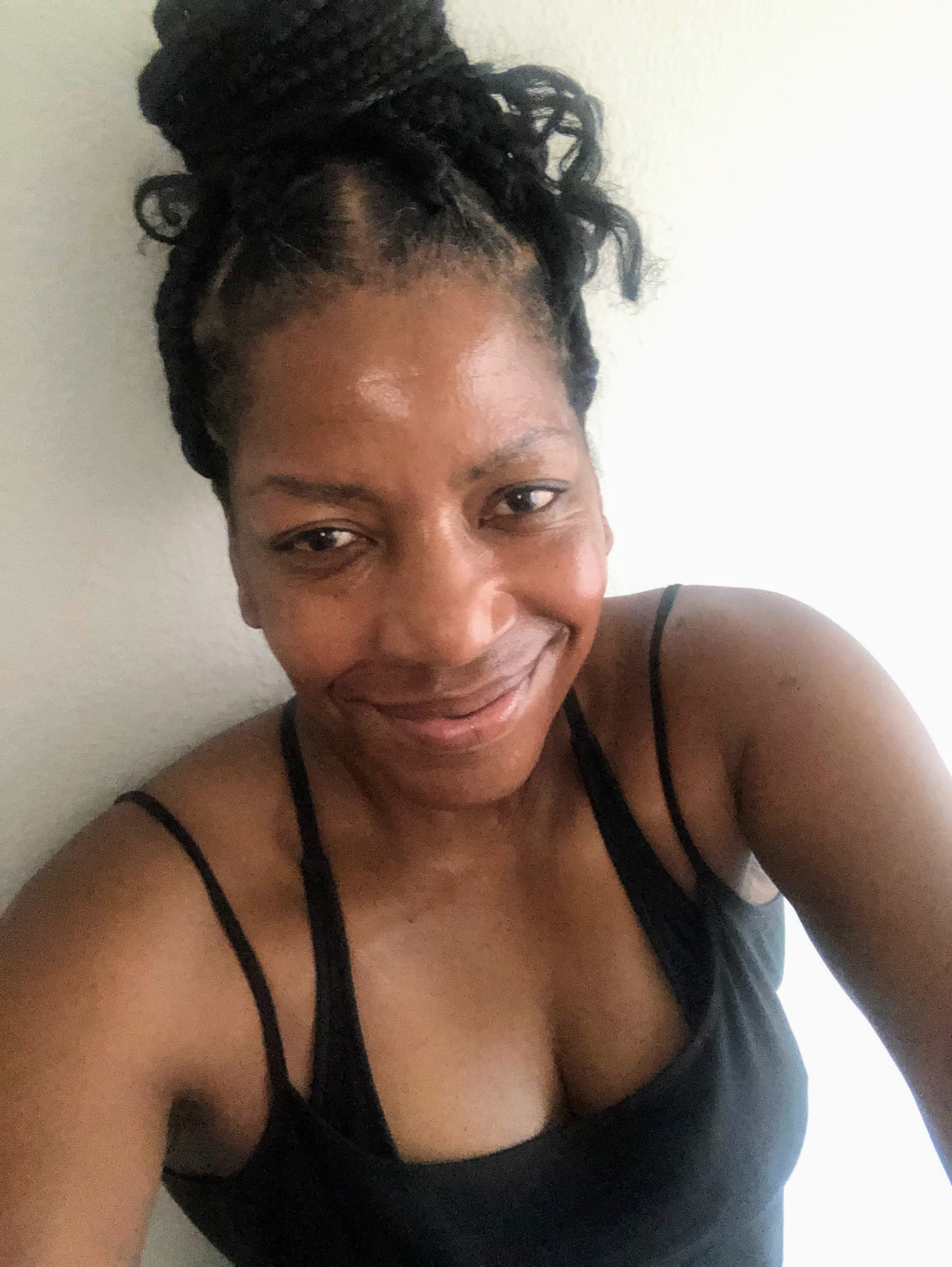
Hi there!
Thanks for stopping by. Hope you learned something today that will help you reach your volleyball goals.
Be sure to subscribe to my email newsletter so you can learn more each week!
Stay strong! Stay motivated!
-Coach April

SUSCRIBE to my email newsletter below!
 Click to learn more about the weekly volleyball classes and clinics or email info@imrpoveyourvolley.com for information
Click to learn more about the weekly volleyball classes and clinics or email info@imrpoveyourvolley.com for informationCongratulations to my seven Boys-18s Vegas Volley club players who played in two state championship finals yesterday, the 3A and 5A State champinship finals at Sunrise Mountain High School.
TOURNAMENT CHAMPIONS!
A-1 Vegas Volley VBC
In It To Win It Tournament
May 2 - 4, 2025 Tournament
Gold Medalists
18s Premier Division
Vegas Volleyball's Unsung Heroes: Celebrating Moms with Peace Love Volleyball Shirts
Ready to energize your volleyball mom journey?
Subscribe to my 'Producing Powerful Passionate Peaceful Players' email list above on ImproveYourVolley.com.
You'll receive energy-boosting tips, exclusive insights from me, Coach April Chapple on maintaining momentum in volleyball.
Let's power up the Vegas volleyball scene together!
Recent Articles
-
Shop Small: Real Volleyball Training With + Results From A Real Coach
Dec 03, 25 10:30 AM
Support a woman-owned business. Get training from a former elite pro with 13+ years coaching experience. Ditch the big box store--invest in proven results. -
How to Jump Float Serve: 3 Pro Volleyball Player's Secret Serving Tips
Nov 28, 25 08:34 PM
Why do college players rely on the jump float serve? It combines power with unpredictable movement. Learn how to jump float serve like the pros in this guide. -
Use A Jump Float Serve To Create Power For An Ace Or To Start A Rally
Nov 28, 25 08:32 PM
Use the overhand jump float serve to generate a powerful serve that starts a rally after the ref blows the whistle for the player behind the service line.
